VLADIMIR SHUKHOV – The Triangulating Russian Spiderman
VLADIMIR SHUKHOV – The Triangulating Russian Spiderman

Throughout the 19th century, cultural developments were occurring in many disciplines that led to the full blossoming of Diagonality in the 20th century. One person central to this critically formative period was the Russian polymath—engineer, scientist, architect, and photographer—Vladimir Shukhov (1853-1939). Whether he was directly inspired by the incredible strength (per unit of material) of actual spiderwebs or not, he saw the potential of triangulating a lattice of narrow steel bands and wires to create huge, light-weight engineering and architectural structures that had never been seen before, other than as proposed designs. Their triangulated geometry resulted in a shift in the imagined geometry of the built environment.
It is not surprising that Shukhov, while still in high school, came up with an original proof of the Pythagorean theorem, an event perhaps foreshadowing his inventive use of triangles as an engineer. His teacher, while praising his achievement, flunked him for violating the guidelines set forth in the textbook. (Is it not the maverick who leads us in new directions?) He graduated from high school in 1871, then in 1876 graduated from college with a Gold Medal. Rejecting an offer to teach mathematics, Shukhov became an engineer, traveling first, however, to Philadelphia in the United States to visit the Centennial Exposition: the first official World’s Fair.

While in the States, Shukhov also travelled to other cities to study the construction industry, various engineering activities such as in Pittsburgh, and the American railway system in general. His visit to the Exposition is noteworthy for several reasons. First is the fact that the kindergarten teachings of the German educational innovator Frederich Froebel were on display. The mother of the great American architect Frank Lloyd Wright also attended the Exposition and bought her son a set of the exhibited Froebel toys, which Wright himself has claimed deeply influenced his sense of geometry and design: “For several years I sat at the little Kindergarten table-top…and played…with the cube, the sphere and the triangle—these smooth wooden maple blocks…All are in my fingers to this day…”
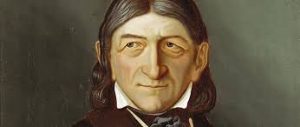
Friedrich Froebel
One wonders whether Shukhov was similarly affected by what he might have seen in the Kindergarten pavilion at the Exposition (Froebel invented the word Kindergarten) or whether he had already fallen under Froebel’s spell in Russia because Froebel’s groundbreaking and very influential educational system had spread worldwide, even as far east as Japan.
At the Centennial Exposition, Shukhov met Alexander Veniaminovich Bari who had worked on organizing the Exposition. It is quite likely that Bari’s local connections made him aware of the 1,000-foot-high tower that was proposed for the Exposition and it is equally likely that Shukhov would have wanted to know more about it because it was designed and would have been built by Clarke, Reeves & Co. owners of the local Phoenixville Bridge Works. This company built the 1875 cast iron bridge that spanned the Schuylkill River that provided much-needed, cross-river access to the fair grounds.

A year later, Shukhov and Bari met in Russia and Bari convinced Shukhov to abandon his medical education, which Shukhov began to pursue after becoming frustrated with the routine engineering he was performing while drafting in an office of the Warsaw-Vienna railroad. Shukhov must have been delightfully stunned when Bari proposed that Shukhov become the Chief Engineer in a new company specializing in innovative engineering. This kind of opportunity is just what any genius should encounter to fully realize his/her innate talents.
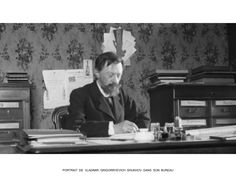
In light of his many projects and the quality of his engineering endeavors, Shukhov is often referred to as the Russian Edison. He is also compared to Gustave Eiffel because of his many contributions in the field of metal construction. This activity included hyperboloid structures, thin-shell structures and tensile structures. Shukhov’s first hyperboloid tower (the first in the world -1896) is a 37 meters high (121 feet) water tower built for the All-Russian Exposition in Nishny Novgorod, Russia.

World’s First Diagrid Hyperboloid Structure
Hyperboloid structures are noteworthy for their inward curving profile. After the fair, the steel diagram tower was bought by a patron of the arts and relocated to his estate in Polibino, Russia where it stands today under state protection. Within a decade the engineering principle and economic advantages of this prototype caught the attention of engineers around the world and the world followed the design principles set forth in the hundreds of Shukhov-designed water towers, lighthouses and supports for radio transmission lines.

The Exposition Tower relocated to Polibino
What is the significance of this design as relates to Diagonality? Given the replication of this design with its diagonal interweaving of structural bands, the mindsets of engineers who created these structures and the ordinary citizens who saw them were altered. As a consequence, non-orthogonal geometry became an acceptable structural and design motif.
THIS PAGE UNDER CONSTRUCTION
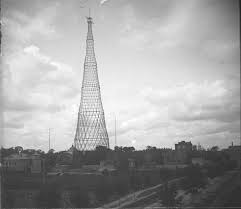

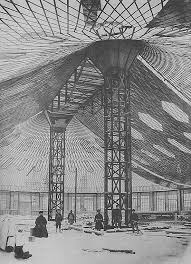
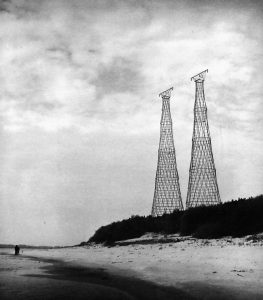
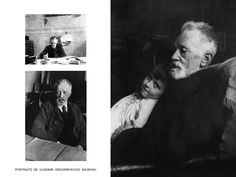
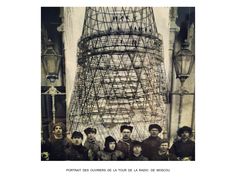
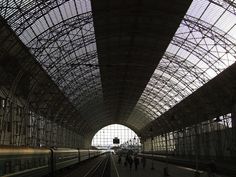

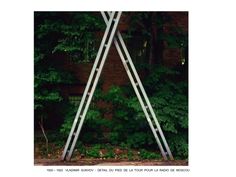

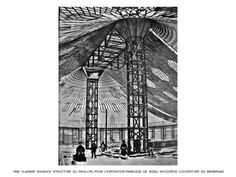

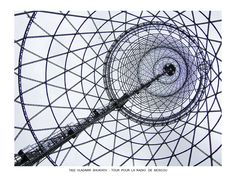
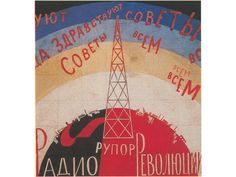

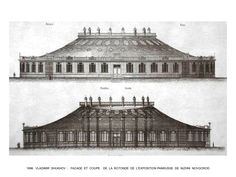
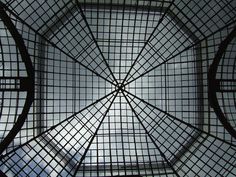
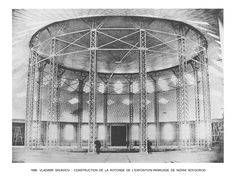
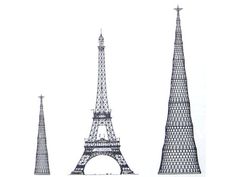
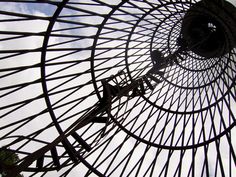
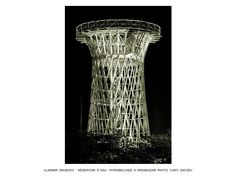

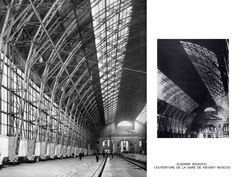
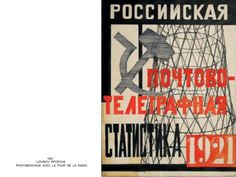
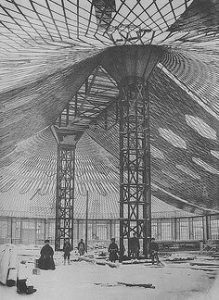
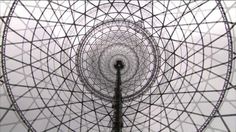
https://vimeo.com/176174130 (A fine short film about the pioneering work of Vladimir Shukhov)